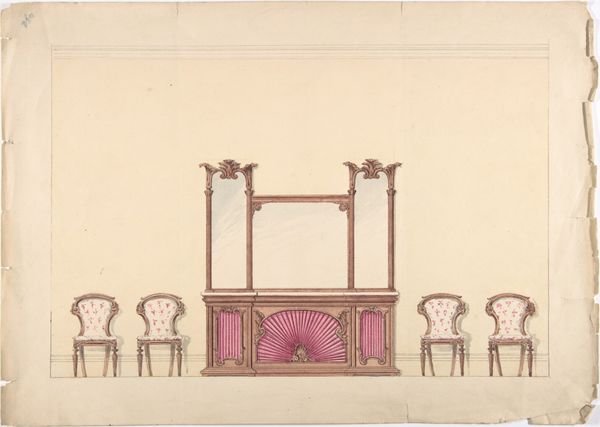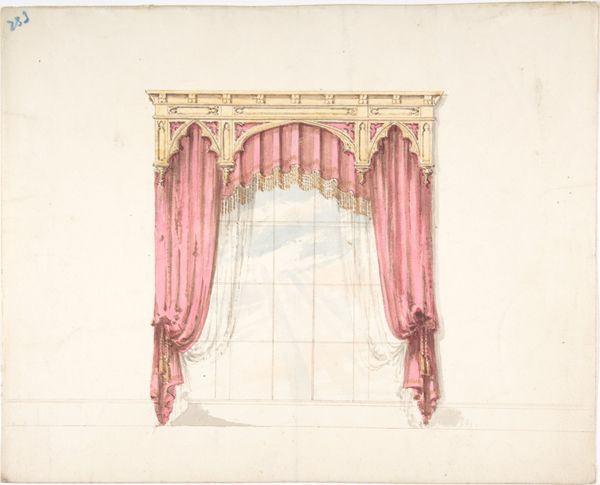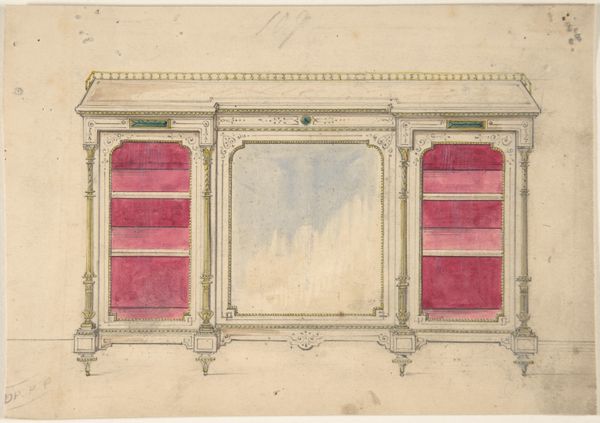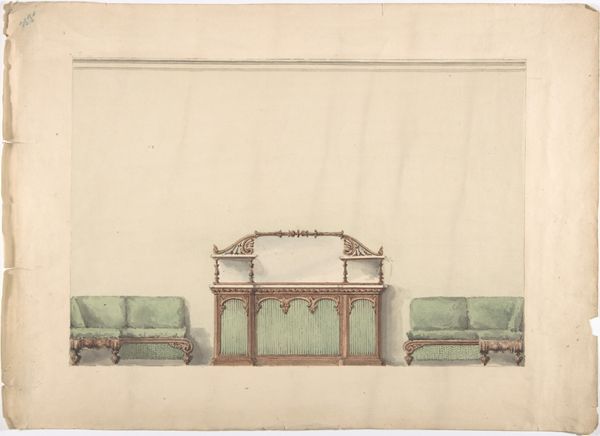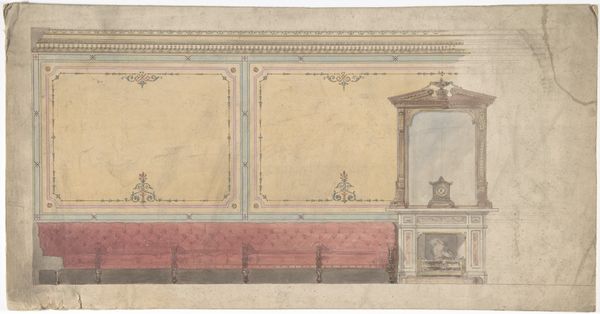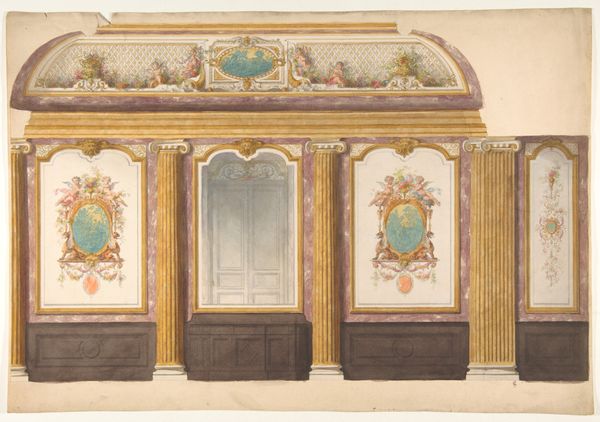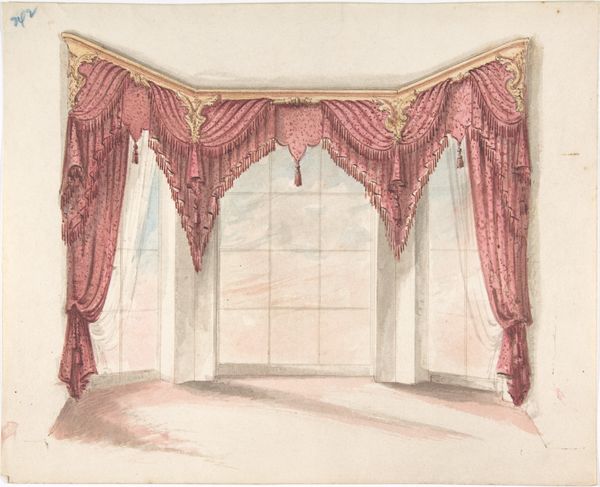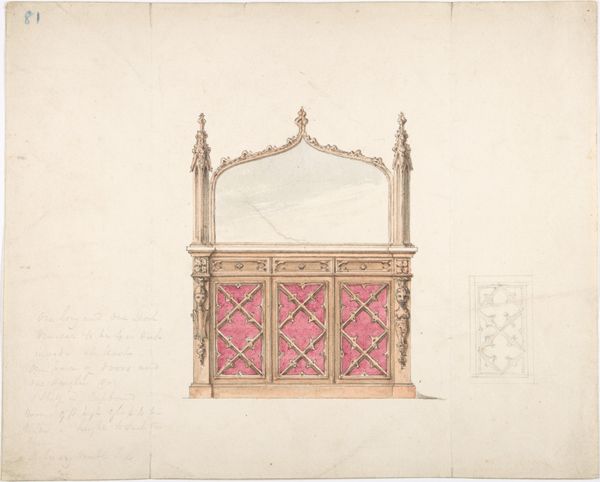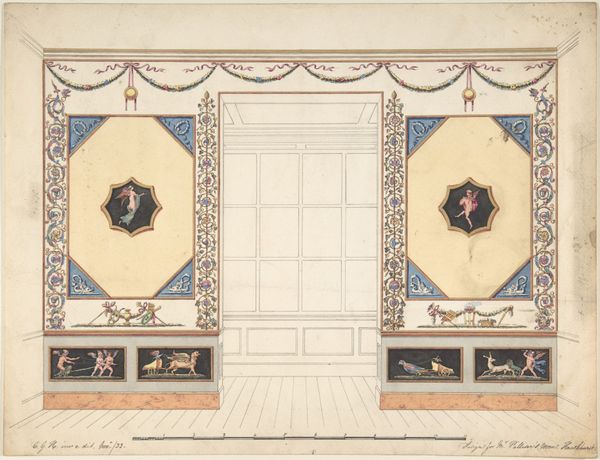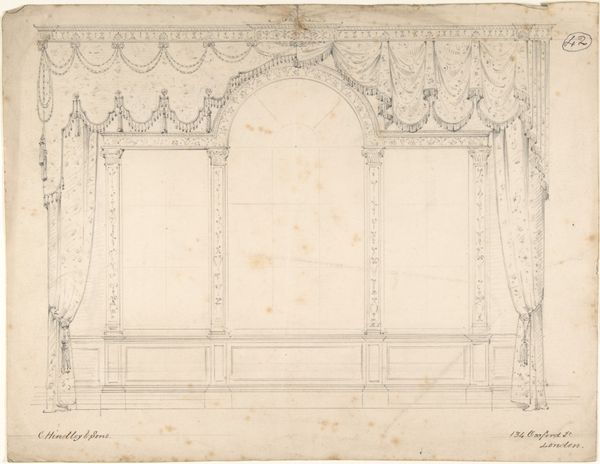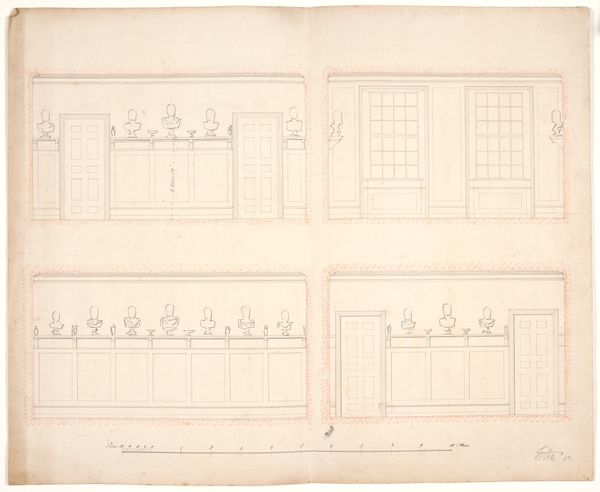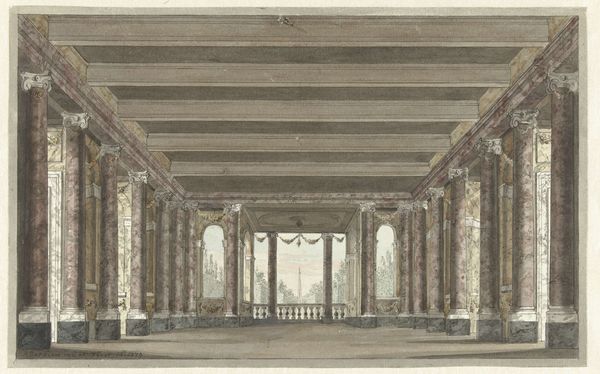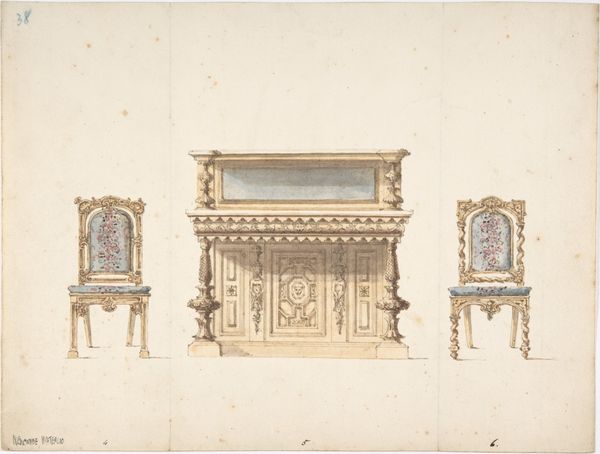
Design for a Mirrored Cabinet and Four Chairs 1800 - 1850
0:00
0:00
drawing, watercolor
#
drawing
#
neoclacissism
#
watercolor
Dimensions: sheet: 12 5/16 x 17 3/16 in. (31.2 x 43.7 cm)
Copyright: Public Domain
Curator: It’s quite restrained, wouldn't you say? Everything is so meticulously symmetrical. Editor: Yes, "restrained" is one word for it. It feels a bit... clinical? Like looking at dollhouse furniture designed by a surgeon. Curator: That might be selling the era short. What we're looking at is "Design for a Mirrored Cabinet and Four Chairs." It's an anonymous drawing, believed to be from somewhere between 1800 and 1850, housed right here at the Met. The rendering combines drawing and watercolor, showcasing an ideal interior in the Neoclassical style. Editor: Right, Neoclassical. I see those tidy little Roman details. Those dainty pink stripes—daring! Do you think they were picturing how people might live with this? The idea of actually sinking into those chairs after a long day? Or is this pure, untouchable fantasy? Curator: Well, this sort of design catered to the aspirations of a rising middle class. Symmetry, classical motifs – they signaled order, good taste, upward mobility. Owning pieces like this visually reinforced a certain status. Editor: So, it's about showing off. Building the stage set for the perfect life. Those little pink-striped cabinets look awfully cramped, you know. Imagine trying to stuff all your secrets in there. Still, there’s something vulnerable about presenting a desire to appear more civilized, more dignified. Curator: It’s aspirational design as a statement. The placement in a museum reframes it, however, doesn't it? We now study it as a representation of those aspirations and their place in cultural history. Editor: Indeed, that anonymous draftsman inadvertently gifted us a little peephole into history – pink stripes and all! I’m starting to see those chairs less as fussy objects, and more like time capsules of ambition. Curator: Precisely, it’s about tracing those lines from the design to the values of its time and considering their continued legacy today. Editor: In its quiet way, this meticulous design speaks volumes. Next time, perhaps, a less clinical staging? More... human?
Comments
No comments
Be the first to comment and join the conversation on the ultimate creative platform.
